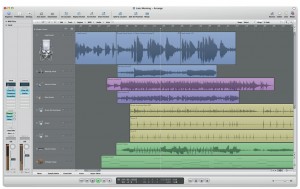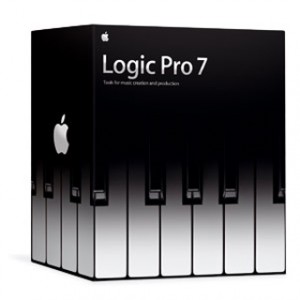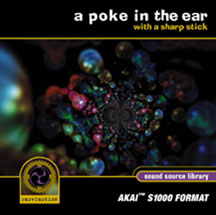| Streaming sample libraries are increasingly taking advantage of the faster storage interfaces, faster CPUs and increased RAM on today’s personal computers. Three recent products from EASTWEST/Quantum Leap have answered the call with higher resolution, increased variety and real-time performance features.
Colossus is a general-purpose library, which is modeled after the variety of sounds found in a typical keyboard workstation. Ra is a collection of ethnic world instrument sounds. Symphonic Choirs includes adult choir sections, a boys’ choir and three soloist virtual instruments. The adult choirs can be programmed to sing words using the WordBuilder application.
The three products in this review are available for $995 US each or discounted through various bundles including an initial offer of all three for the price of two. Colossus is also available in a hardware configuration with customized MUSE Research Receptor, sold as the EW Receptor.
Kompact
The three sample libraries in this review come with dedicated versions of the Native Instruments (NI), Kompact sample player. Kompact incorporates 32-bit internal processing and has support for up to 256 voices of polyphony depending on computer resources. NI has an automated registration system for license keys, which includes support for moving an existing software license to a new computer.
Kompact runs independently for live performance and as a software plug-in through VST, DXi, ASIO and DirectSound under Windows XP and VST, Audio Units, Core Audio, Core MIDI and RTAS under Mac OS X (10.3 or higher).
Colossus
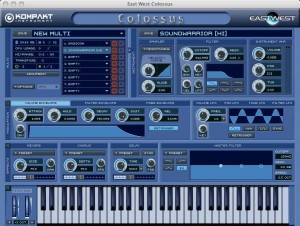
I’ve purchased over a dozen keyboards in the 30+ years that I’ve been composing and performing. My first criterion for choosing an instrument is very simple. Does it inspire me?
Imagine the variety of sounds in a professional keyboard workstation with huge storage and you will have an idea of breadth and depth of Colossus. Whereas typical keyboards use file size compression to squeeze samples into read-only memory, Colossus takes about 32 GB of hard drive to store all the samples and articulations for its 160 instruments. Many of the instruments use key switching to enable real-time articulation control.
Approximately half of the disk space is used by a selection of samples from previous EW/QL titles. The other half were newly recorded at 24-bit resolution at Ocean Way Studio B. The instruments represented here are suited to rock, pop, jazz, country, classical and ethnic/world genres.
The percussion highlights include electronic, ethnic, orchestral and drum kits for rock, jazz, Hip Hop and country. The guitar family includes 60’s electrics, blues, electric sitar, banjo, Hawaiian and lapsteel as well as acoustic, fretted and fretless basses. The acoustic Washburn was one of my favorites – suited for pop and world music.
Several ambient textures are provided in the New Age “ensembles.” I found them very colorful and easy to play. There are stock synthesizer leads and basses and some very cool dark atmospherics collectively known as, “Stormdrone.” Most of these use the mod wheel to morph between sounds. The General MIDI set is augmented with pop brass sounds and a choir with vowel sound cross fades.
The keyboards include two grand pianos, a honky-tonk, Rhodes, Clavinet, church organs, B3 and Farfisa. The main piano is a versatile bright Steinway that will sound familiar to owners of EASTWEST piano libraries such as the Pro Samples volume 8. The new 2GB Fazioli piano is darker and would be at home playing Debussy or a moody Thomas Newman score.
I was impressed by the quality and scope of Colossus. The new ethnic sounds are gorgeous and cover most of the world’s regions at some level. The orchestral sounds are of excellent quality and suitable for quick and simple symphonic arrangements and pop/rock recordings.
I used Colossus strings, trombones and French Horns as a replacement for previously recorded keyboard parts on a CD I’m producing. The Colossus sounds are brighter and more detailed than the sounds I had originally played on my Kurzweil PC88. The KONTACT player worked flawlessly in Pro Tools 6.7 under OS 10.3.7 and Logic 7.1 under OS 10.4.
About half of the sounds in Colossus are from other EW/QL sample libraries. This may be a draw back to those with a heavy investment in certain specific titles. For everyone else, this set is a bargain, yes even at nearly $1,000.
Ra
Quantum Leap Ra is a 14 Gigabyte sample set covering instruments from the Americas, Australia, Europe, the Far East, Africa, India the Middle East and the Turkish Empire. You’ll find most of the world represented but this is not an exhaustive world instrument collection.
As an owner of Rare Instruments, I was intimately familiar with about 10% of the Ra library. The remaining 90% was recorded at Ocean Way studios in Hollywood by producers, Pacemaker and Tony Austin. 
Many of the virtual instruments include the idiosyncratic bends and inflections that make each instrument unique. Some of these articulations can be selected on-the-fly using key switching.
Ra also features a new performance legato mode, called Q Legato, which I found very realistic. One of my favorite samples from the original Rare Instruments Akai sample set is the Armenian duduk. The key-based articulation switching in Ra makes it possible to explore the range of expression in a single performance – no need to overdub the different note endings, just hit the key switch.
Space does not permit listing every instrument but there are some gems, such as the metal and wooden shakers and Ewe drum ensemble from Africa. Ra is not heavy in percussion sounds but is designed to complement the EASTWEST Stormdrum product.
The little touches make a difference when you want realism on a tight deadline. One of my favorites of the African drums is the speaker rattling low berkete. The hand slaps conveniently truncate a sustaining low note as you would expect.
I love the sound of the sitar but have never found a sample that I can play for more than 2 minutes until now. The authentic bends and flourishes in the key-switched sitar program had me hooked for hours. I laid down a bed of tabla drums and a tambura drone with its characteristic dynamic swells and had an authentic sounding track in no time.
Other favorites include the ney flute, hurdy gurdy, First Nations cedar flute, Irish low whistle, Gamelan ensembles, highland pipes, gongs, bansuri, middle east strings and the baritone violin. Lord of the Rings fans take note — the Hardanger fiddle is here. The producers thoughtfully included non-traditional vibrato samples as played in the LOTR score along with the traditional inflections.
The producers behind Ra realized that it’s just not enough to capture one or two playing styles and call it a day. Many of the melodic instruments offer a generous variety of note bends, trailing figures and alternative playing styles.
The focus on authenticity and sound quality is what sets Ra apart from other ethnic instrument sets. Ra scores big points where it counts.
Symphonic Choirs
East West/Quantum Leap Symphonic Choirs (SC) is a virtual instrument library comprising soprano, alto, tenor and bass (SATB) choirs, soprano boys and soloist programs with soprano, alto and boy singers. 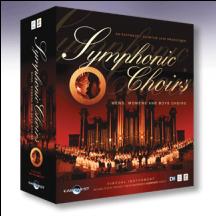
Samples were recorded in the same concert hall, with the same engineer and mic techniques used for EASTWEST/Quantum Leap Symphonic Orchestra. The recordings were made at 24-bit, 88.2 kHz resolution (or better) by engineer, Keith Johnson. Close mic, full stage and the ambient hall samples are available for each choir and soloist and the samples are phase aligned to allow blending.
Need a vowel? The SATB choirs include vibrato and non-vibrato looped vowel sounds, consonant sounds and voice effects such as shouts, falls and whispered words. The soprano, alto and boys soloist samples have fewer articulations and no adjustable vibrato. The “Church” choir combines the four adult sections with full hall reverberation in a single instrument for composing and quick arrangements. The mod wheel cross fades non-vibrato with vibrato samples where available and dynamics in some cases.
The most unique aspect of SC is the WordBuilder application, which allows entry of English and phonetics for more precise control of the adult choirs. WordBuilder does not work with the soloist or Church choir programs but does work with both stand-alone and plug-in versions of Kompact.
The recommended CPU speeds are 3GHz for Pentiums/Athalons and G5 processors running at 1.8 GHz or faster. SC requires 38 GB of drive space and 2 GB of RAM are recommended. I tested SC on a G5 Quad with 4 GB of RAM and a G4 Dual 1-GHz with 1.5 GB RAM.
The sound is superb. The voices are premixed with a wide sound stage giving excellent localization of individual singers in each section. The vocal quality has no apparent coloration from microphones or room acoustics resulting in a very natural sound.
The hall sound is gorgeous and on the G5 I usually turned off my convolution reverb and used samples with the room sound. This is a first rate choir and an immaculate recording.
WordBuilder’s linguistic features give SC its unique potential but harnessing this potential requires a little patience and the set-up can be daunting. The on-line instructional videos, FAQs and forum are highly recommended.
First, the virtual connections between your DAW software, WordBuilder and the Kompact player must be made. With Logic Pro 7, WordBuilder runs as a separate application and must be virtually cabled between the sequencer engine and the Kompact plug-in. The “pre-wired” Logic Environment and WordBuilder templates on the EASTWEST web site were helpful.
Each section (altos, tenors, etc.) has its own window in WordBuilder and a dedicated instance of the Kompact player in Logic. The special multi-programs used by WordBuilder are resource intensive because they use five instrument programs each to cover the full range of vowel and consonant sounds.
WordBuilder gives you extensive control of pronunciation. For example, you can adjust how quickly the choir moves through diphthongs using cross fades (Oy!) and control the syllabic em-PHA-sis.
Got a song about snakes? You can sustain non-pitched consonants such as S, T and H. Pitched consonants can also be sustained to create, for example, “singing insects” with a “zzzzzz” melody or to record a certain soup commercial that goes, “mmm mmm good.”
This versatile library has many uses including TV/film scoring, video game music, jingles and concert music. I wrote several pieces to test the range of SC and found the experience of commanding a first rate choir with phonetic programming quite surreal. First, I created a horror film theme using tenors and the boys’ choir singing in Latin. I was going for something in the style of Jerry Goldsmith’s score for “The Omen.”
WordBuilder’s built-in Latin phrases gave me a quick way to start my vocal track. The vocals were still distinct even after adding a dense orchestration of strings, brass and percussion. The stereo width of both choirs helped them stand out in the mix while the 24-bit quality and Latin syllables created a frightening realism (whatever they’re saying).
Next I went for a lighter sound using the female alto section with a celesta-driven string arrangement along the lines of Danny Elfman’s title music for “Edward Scissorhands.” Again, I turned to WordBuilder to breathe life into the track with a series of “ah” and “oh” sounds and the occasional “ooowaaah.” SC sounded like the real thing.
The full choirs in SC would be right at home in an action/adventure film score or an electronic game soundtrack. The soloist samples are beautiful, haunting and perfect for simple parts but there is not enough articulation control for instrumental singers like Lisa Gerrard (Gladiator) or Lisbeth Scott (Munich) to worry about their jobs.
A tremendous amount of control is provided by WordBuilder but the fact that pronunciation is not linked directly with the sequencer’s timeline makes word/melody synchronization a bit tricky during recording. I had no problems syncing words with music when both Logic and WordBuilder were started from the beginning.
Some of the sample sets are more resource intensive than others. The G4 was adequate for one or two sections but the Quad was better suited to the demands of a larger choir with full dynamics and WordBuilder. Faster load time and lower memory use are possible by reducing the buffer size and polyphony and using the close mic samples with a separate reverb plug-in.
After tweaking the, so called, “expert” memory settings in Kompact, I was able to open four multi-programs for WordBuilder on the G5 Quad. In this extreme test, it took Logic 7 about three and half minutes to load my Logic song with all SATB choirs using full mic positions and 3-layer dynamics from a FW800 drive.
Achieving believable singing performances with Symphonic Choirs takes some tweaking and an investment in learning the techniques but the results are out of this world. This is an amazing product.
(c) 2006 Carlos Garza |
